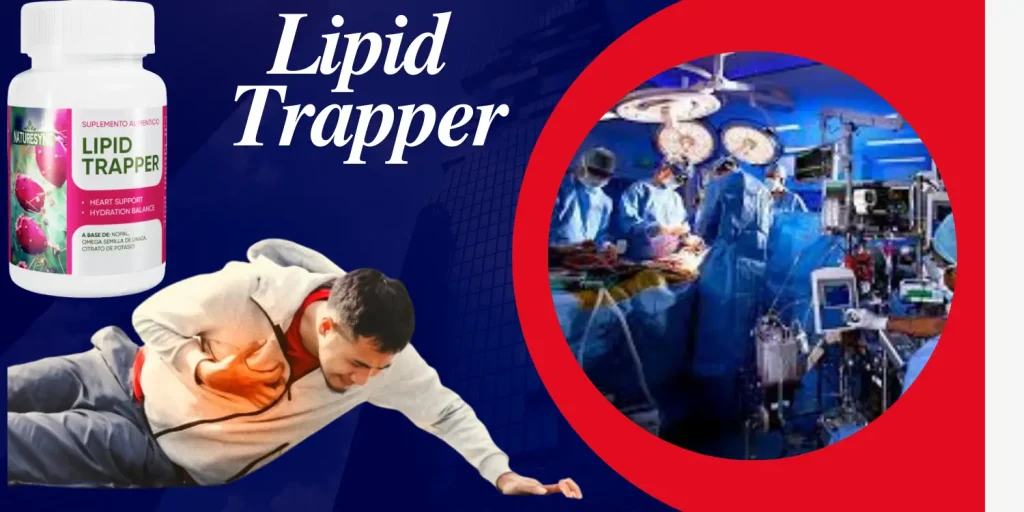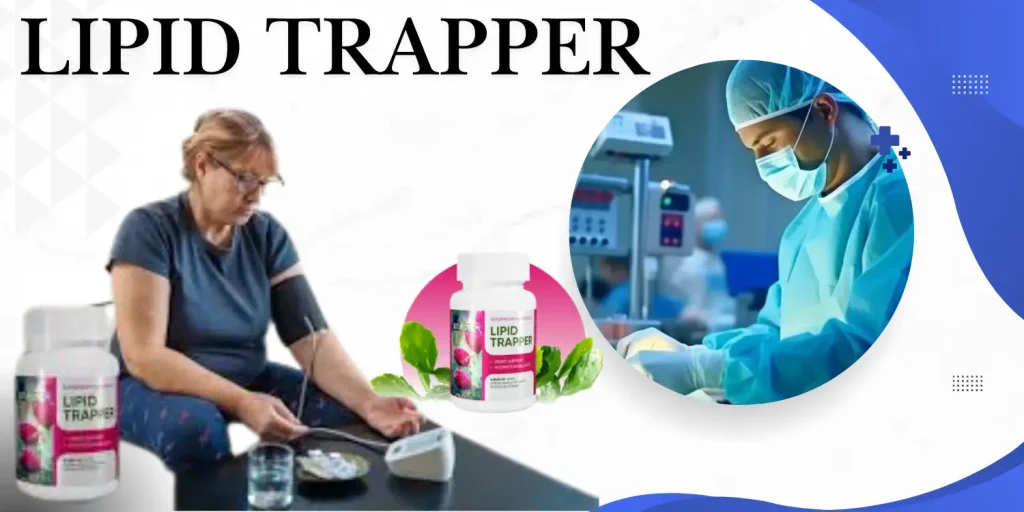Introduction about Lipid Trapper?
A revolutionary device was developed to solve several challenges linked to lipid management, a sub-discipline of the biological and medical sciences. Lipids are a category of structural, energy reserve, and signaling substances; they include fats, oils, and waxes. However, lipid disorders are linked with diseases of serious nature, including obesity, metabolic disorders, and cardiovascular diseases.
A new product we are introducing—the Lipid TrTrapper—is the most effective, precise, and innovative lipid trapping/extracting device. These attributes of the platform enable precise lipid profiling of various biological samples of elevated structural intricacy while maintaining high throughput and the most advanced biochemical approaches. It is used in research, diagnostics, and pharmaceuticals; it helps in identifying new drug targets and offers information on processes linked to lipids. The Lipid Trapper implies that scientists obtain real-time kinetics of lipids together with the outcomes on well-being and disease. Altogether, this invention has the potential to change the landscape of lipidomics by bridging the theoretical-decision-practice gap and providing the basis for individualized treatment of diseases related to lipids.

What is the Use of Lipid Trapper?
Lipid Trapper is the novel versatile apparatus that would make the radically different approach to the analysis of and targeting of lipids in biology and medicine possible. Lipids refer to a large group of substances, which include fats, oils, phospholipids, and sterols, and these have uses such as energy storage, cellular signaling, as well as structure and function. However, any disruption in all such chemokines is associated with various diseases, including cancer, diabetes, neurodegenerative diseases, and cardiovascular diseases. The primary use of the highly specialized Lipid Trapper is for the separation and quantification of the lipid of the sample as accurately as possible.
This can be made possible through its distinguished biochemical trapping course that creates and preserves in particular sorts of lipid constituents from miscellaneous biological materials, including blood, tissue, and cellular culture. In research studies, lipidomics explores where and to what extent and rate lipids are released and metabolized, the composition of lipids, and lipid roles in health and disease. Relying on the initial biomarkers of lipid profile, Lipid Trapper facilitates the identification of cardiovascular and metabolic diseases. They assisted in the assessment of lipid-modifying products and the knowledge of their influence on methodological paths; in pharmacological analysis, this quickens drug development.
What increases lipid peroxidation?
Free radical-mediated1. Lipid peroxidation can be described as the oxidation of lipids, preferably PUFAs, by ROS. This mechanism is linked with cancer, atherosclerosis, and neurodegenerative diseases; it leads to cell dysfunction. In turn, a range of factors contributing to lipid peroxidation is identified to be primary and exogenous, as well as secondary and endogenous contributors. Endogenous Factors: 1. Oxidative stress is due to pollutants, insecticides, and heavy metals such as lead and cadmium. The effects are due to oxidative stress produced by ROS from ionizing and ultraviolet (UV) radiation. Each consumption of alcohol and smoking of tobacco forms free radicals as byproducts. diation:
The effects are due to oxidative stress induced by ROS from ionizing and ultraviolet (UV) radiation, which enhances lipid peroxidation. king and alcohol Use: **Each drink of alcohol and smoking of tobacco generates free radicals as byproducts. **Factors:** Lipid peroxidation could be enhanced by diets that contained low antioxidants or polyunsaturated fatty acids. Techniques: Techniques: Peroxidation is caused by several reasons; the body employs vitamin E, vitamin C, glutathione, and superoxide dismutase to reduce effects. However, antioHowever, form part of these defenses and defense, dative stress goes beyond them, lipid pethem, and degrades cells and tissues.

How does lipid trapping cause cell death?
Cell membrane accumulation of oxidized lipids results in what is often referred to as “lipid trapping” and is commonly associated with ferroptosis. Cell death is the ultimate end product of this mechanism, and there is also loss of membrane integrity and cell dysfunction. Intracellular contents leak, ion imbalance, and ultimately rupture occur because of increased membrane permeability. 1. Cellular homeostasis disruption: Oxidized lipids also affect signaling pathways as well as energy-producing processes that are critical to the functioning of all cells. What this disturbance does is promote cell death and malfunctions of mitochondria and the unleashing of pro-apoptotic proteins.
2. **Activation of Ferroptosis:** Most of the ferroptosis, a type of programmed cell death based on iron-catalyzed lipid peroxidation, is lipid-entrapped. Another cancer-promoting impact is related to cell death when repair systems such as GPX4 are halted. Lipid entrapment is the critical factor in neurodegenerative diseases, cancer, and ischemia-reperfusion injury because it disrupts membrane structure and overwhelms the cell’s protective mechanisms.

Lipid Trapper: Is It Good or Bad?
From these dynamics, the contribution that lipid trapping offers in the operations of the cells will either be viewed in a positive aspect or the negative one. Therefore, lipid trapping represents a fundamental association with oxidative stress and ferroptosis and other forms of cell death. Traditionally, because of depressed antioxidant status and higher rates of iron turnover, most cancer cells are vulnerable to enhanced lipid peroxidation. The lipid trapping mechanism happens inside the cancer cells and not the normal one—that induces the ferroptosis on their desires.
2. The immune reaction: Perhaps the immune function is invoked when controlled lipid peroxidation is initiated. For example, oxidized lipids are also used as signals to control the immunological response to infections, injuries, and inflammation. The following are the negative aspects of lipid trapping: 1. **Damage to tissue:** Accumulation of lipids at high concentrations causes oxidative stress, damages the membrane, and results in cell death, which in turn exacerbates liver disease, ischemia-reperfusion injury, and neurodegenerative diseases like Parkinson’s and Alzheimer’s.
Although it can have quite severe pathological consequences should its functioning be dysregulated in some manner, it can be used in therapy. As a result, the understanding and management of lipid trapping mechanisms are crucial at this stage in obtaining individualized medications that receive for themselves only the advantages that explain the need for the formation of deficiencies.

How does vitamin E stop lipid Trapper peroxidation?
Lipid hydroperoxides (LOOH) and lipid peroxyl radicals (LOO•) are generated from this process, in turn feeding the chain process and leading to oxidative stress. ViVitamin E, being a sacrificial antioxidant, α-pecially interrupts this chain rereaction in its α-tocopherol form. pid peroxyl radicals (LOO•) are neutralized, and a stable lipid molecule is formed if they donate a hydrogen atom from its hydroxyl group to them.
Due to this process, α-tocopherol is converted into tocopheroxyl raradical, which reacts slowly and does not transfer lipid peperoxidation. In a synergistic antioxidant system, antioxidants such as glutathione or vitamin C can bleach the tocopheroxyl radical back to tocopherol. Vitamin E can go on protecting lipid membranes from oxidative damage in this way due to the renerenewal. The antioxidant activity of vitamin E sustains the flexibility, efficacy, and cohesion of membranes by restricting free radical oxidative decomposition of lipids.
This protection is especially needed since certain tissues rich in PUFA, such as the brain, liver, and membranes, are susceptible to oxidative stress. Therefore, E brings the chain reactions to a halt and halts cellular integrity by donating hydrogen atoms to the lipid radicals, eventing lipid peroxidation. It has the ability to regenerate, making it an important ingredient when it comes to eliminating stress.
Lipid Trapper about Conclusion?
In its role as a lipid phenol, vitamin E protects membranes against oxidative harm that occurs due to lipid peroxalation. As accelerated by ROS, this mechanism subjects PUFAs in lipid bilayers to degradation and sets off a toxic cascade. Vitamin E, an antioxidant, donates hydrogen to lipid radicals, which ‘fixes’ the species, thereby stopping the free radicals from further rancidity. It is very relevant in PUFA-rich tissues such as the brain and the liver and cell membranes because the tissues can undergo oxidative stress, which is potentially damaging to human health.
\ Furthermore, the fact that vitamin E can be recycled—and sometimes in concert with glutathione or vitamin C—guarantees constant antioxidant protection as provided by vitamin E. In other words, vitamin E is necessary to improve an organism’s adaptation and stability of cells, replacing the position of protecting lipids against peroxidation and maintaining cellular membranes.
